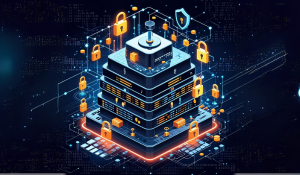As the digital landscape grows increasingly interconnected, the security of software supply chains has emerged as a critical concern for product security teams worldwide. Connected devices--and their proliferation across every corner of our lives--has come to mean that software supply chain risks now represent a universal challenge for everyone, transcending sectors, industries, and national boundaries.
"Software supply chain attacks have seen triple-digit increases, but few organizations have taken steps to evaluate the risks of these complex attacks," Gartner® states in its latest report on software supply chain risks. This statement underscores the urgency for organizations to fortify their software supply chain security.
A Grim Reality: The Increasing Threat Landscape
Recent statistics paint a troubling picture of the current state of affairs. Research has disclosed a doubling of software supply chain attacks in 2023 compared to the previous four years combined. These attacks have resulted in a staggering $46 billion in costs, as estimated by Juniper Research. This alarming surge highlights the critical need for more robust security solutions to address the intensifying threat landscape.
A study on Application Security Posture Management (ASPM) reveals a significant blind spot: 77% of U.S.-based CISOs have identified software supply chain security as a notable vulnerability within their application security strategies. This growing awareness among CISOs indicates a broader shift towards prioritizing defenses against vulnerabilities originating from software supply chains.
Gartner® research reports that almost two-thirds (61%) of U.S. businesses were directly impacted by a software supply chain attack in the 12-month period ending in April 2023. These statistics underscore the importance of implementing comprehensive security measures.
Navigating the Complex Regulatory Landscape
For organizations contemplating new or supplementary solutions to bolster their product security, the landscape is complex. It’s not just about understanding the evolving nature of threats but also about navigating the regulatory environment that increasingly shapes security practices and priorities.
Increasing Regulatory Scrutiny as a Driver
The European Union's Cyber Resilience Act (CRA), Executive Order 14028 on Improving the Nation's Cybersecurity in the United States, and the FDA's Cybersecurity Guidance for medical devices represent pivotal regulatory landmarks driving the adoption of more stringent product security measures. These regulations emphasize the necessity for organizations to protect their customers and operations from cybersecurity threats while adhering to evolving compliance requirements.
Security and risk management leaders are preparing for the fact that, "by 2026, at least 60% of organizations procuring mission-critical software solutions will mandate software bill of materials (SBOM) disclosures in their license and support agreements." These leaders need practical advice to protect their organizations from software supply chain attacks while ensuring compliance with increasingly stringent regulatory requirements.
Product Security Solutions: Key Considerations
As businesses explore product security solutions to enhance their defenses against software supply chain threats, they must consider several critical factors:
- Emerging Risks: What are the most pressing and emerging risks we face in our software supply chain?
- Mitigation Strategies: How can the available product security solutions help us mitigate these risks effectively?
- Regulatory Compliance: How can these solutions facilitate our compliance with regulations such as the EU CRA, EO 14028, FDA Cybersecurity Guidance, and US Cyber Trust Mark?
- Comprehensive Security: Are we addressing the often-overlooked aspects of our supply chain security? Is our approach comprehensive enough to withstand scrutiny?
- Customer Trust: Are we delivering products that merit our customers' trust? Does our product security strategy reflect a commitment to security that's integrated into our products and practices?
Addressing these considerations is essential for developing a robust, resilient product security strategy that not only mitigates risks but also aligns with regulatory demands. In an era where product security is increasingly becoming a competitive differentiator, the choice of security solutions is more critical than ever.
Organizations must seek solutions that offer not just technical robustness but also regulatory savvy, ensuring that their security posture is both effective and compliant. This dual focus will be key to navigating the complexities of the modern threat landscape and regulatory environment, safeguarding businesses and their customers alike.
Download the Finite State Buyer's Guide for Product Security Solutions to gain unparalleled visibility and control over your software supply chain risk. This comprehensive guide offers in-depth insights, expert recommendations, and actionable strategies to help you secure your software supply chain effectively.
Stay ahead of the curve and protect your organization from costly attacks by mastering your software supply chain risk with confidence.
Subscribe to Our Blog
Get the latest posts delivered straight to your inbox weekly.
Share this
You May Also Like
These Related Stories

Six Things to Consider When Evaluating Software Security Solutions

The Future of Connected Device Security Post CISA Guidance



